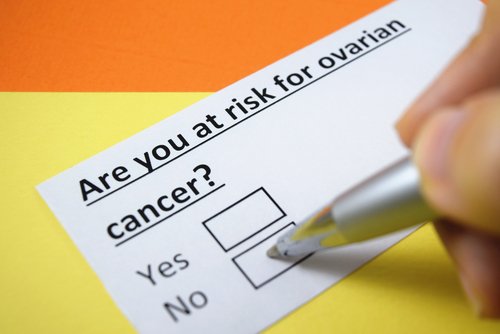Women who carry BRAC1 or BRAC2 genetic mutations have an increased risk of developing breast and ovarian cancers, according to a recent report published in JAMA.
The study, “Risks of Breast, Ovarian, and Contralateral Breast Cancer for BRCA1 and BRCA2 Mutation Carriers,” may help doctors identify patients more likely to develop these diseases and design monitoring programs for them.
Alterations in BRCA1 or BRCA2 gene sequences are known to be associated with the development, progression, and aggressiveness of breast and ovarian cancers. Researchers at the University of Cambridge, in collaboration with the BRCA1 and BRCA2 Cohort Consortium, assessed the age-specific risk of breast or ovarian cancer for women carrying BRCA1 or BRCA2 mutations.
The research included women from the International BRCA1/2 Carrier Cohort Study, the Breast Cancer Family Registry, and the Kathleen Cuningham Foundation Consortium for Research into Familial Breast Cancer.
A total of 9,856 participants, including 6,036 BRCA1 and 3,820 BRCA2 carriers were evaluated. At the start of the study, 5,046 participants were cancer-free, and 4,810 had breast or ovarian cancer, or both.
After a median follow-up of five years, researchers found that those carrying BRCA1 and BRCA2 mutations had a 72% and 69% higher risk, respectively, of developing breast cancer by the age of 80.
The incidence of breast cancer was seen to increase rapidly until the age range of 30 to 40 for BRCA1 carriers, and 40 to 50 for BRCA2 carriers. After that, the incidence remained stable until 80 years of age.
The authors also reported that the risk of breast cancer increased with clinical family history of breast cancer among first- and second-degree relatives. Women with BRCA1 and BRCA2 mutations who had two or more relatives affected by cancer had 1.99 and 1.91 times the increased risk, respectively, of having the disease.
A similar evaluation was conducted for the risk of ovarian cancer, with researchers finding that at the age of 80, women with BRCA1 and BRCA2 mutations had a cumulative ovarian cancer risk of 44% and 17%, respectively.
However, family history of ovarian cancer did not seem to affect the risk of ovarian cancer in BRCA1 mutation patients. No conclusions regarding BRCA2 mutation status were obtained due to the low number of participants with a family history of ovarian cancer.
The observed links between breast cancer risk and the status of the BRCA1 and BRCA2 mutations also were correlated with the location of the mutations within the genetic sequence, the authors reported.
“The results indicate that family history is a strong risk factor for mutation carriers and that cancer risks vary by mutation location, suggesting that individualized counseling should incorporate both family history profiles and mutation location,” the researchers wrote.
One study limitation the authors highlighted was that the risk assessment associated with family history only considered participants who had relatives with breast cancer. Thus, the results may not accurately describe the carriers of BRCA1 and BRCA2 mutations with no family history of breast cancer.
“The present results suggest that cancer risks for women with no family history are likely to be lower than those estimated here,” the authors wrote.

